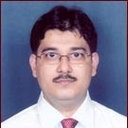Patterns of tyrosine phosphorylation differ in vascular hypertrophy and hyperplasia.
Palabras clave
Abstracto
Vascular smooth muscle cells (VSMC) undergo hypertrophy when exposed to thromboxane A2 and hyperplasia when exposed to phorbol 12-myristate 13-acetate (PMA) or platelet-derived growth factor (PDGF). Each of these three agonists stimulate rapid tyrosine phosphorylation of numerous VSMC proteins. The current studies were undertaken to identify proteins that are specifically tyrosine phosphorylated in one or the other growth response. All three agonists increased the phosphotyrosine content of multiple proteins. In Western analysis of phosphotyrosine immunoprecipitates, the hyperplastic agents PDGF and PMA increased tyrosine phosphorylation of phospholipase C-gamma 1 (PLC-gamma 1), GTPase-activating protein (GAP), and phosphatidylinositol-3-kinase (PI-3-kinase), while the hypertrophic agonist thromboxane failed to tyrosine-phosphorylate either of these three substrates. Tyrosine kinase inhibition with herbimycin A (5 microM) prevented agonist-stimulated tyrosine phosphorylation of PLC-gamma 1, GAP, and PI-3-kinase. In growth studies, herbimycin A inhibited PMA- and PDGF-induced hyperplasia but not thromboxane-stimulated hypertrophy. These results indicate that tyrosine phosphorylation of PLC-gamma 1, GAP, and PI-3-kinase are specific responses for VSMC hyperplasia but not thromboxane-stimulated hypertrophy.


